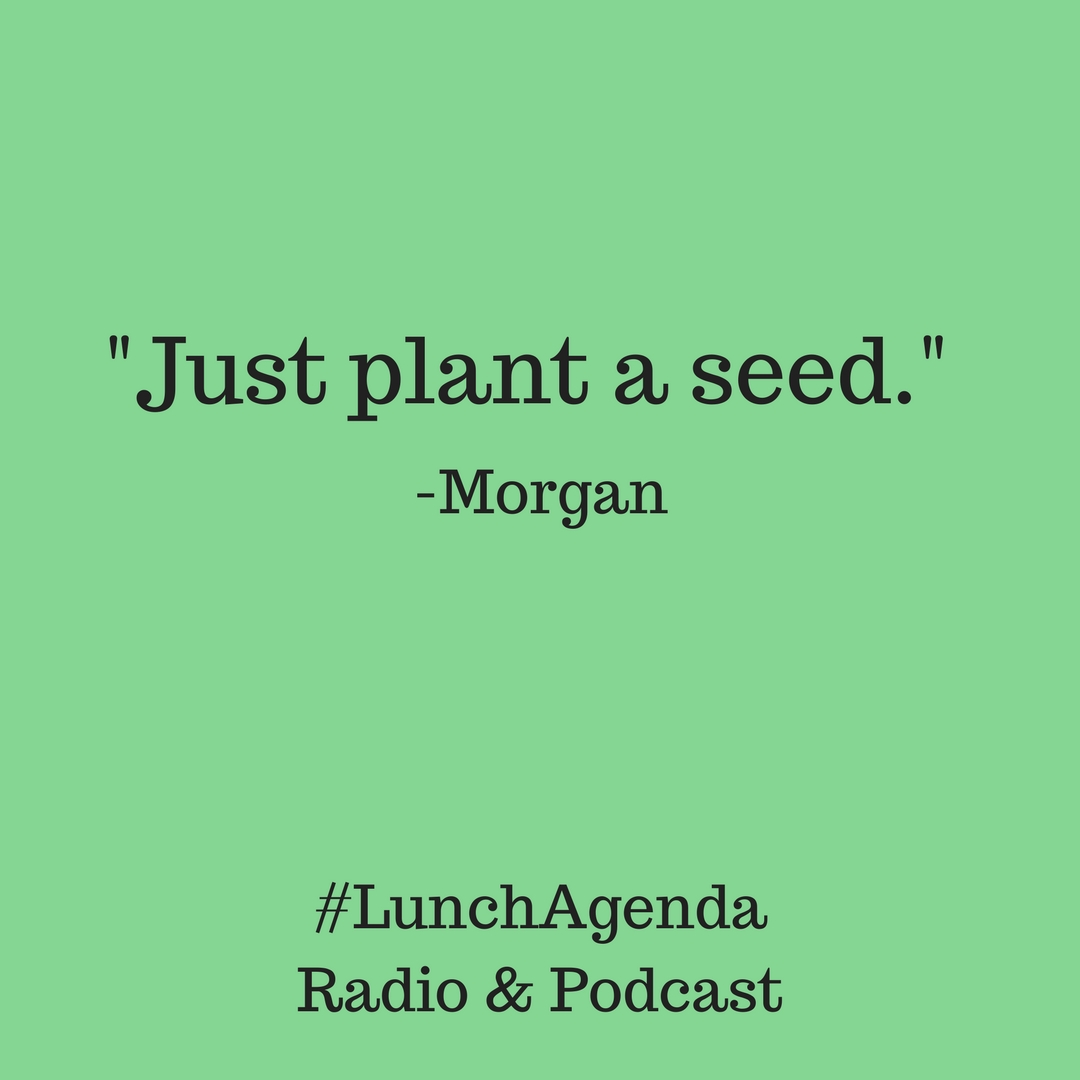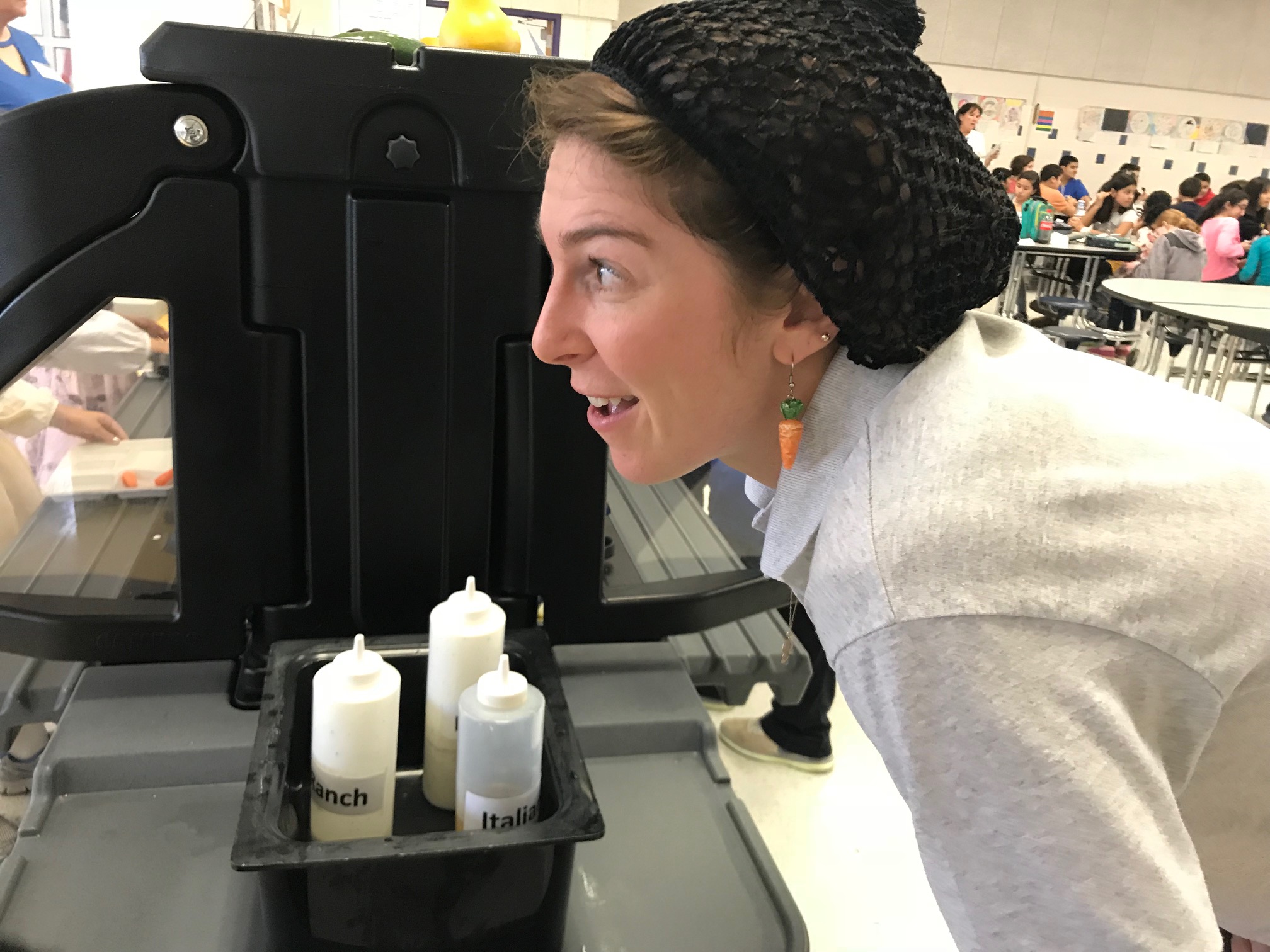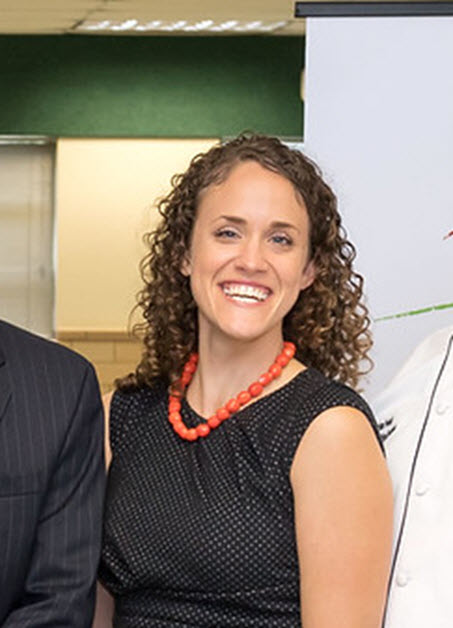What makes flour "whole" and why does that matter for our health? Kiko talks with Heinz Thomet, a Maryland farmer who grows and mills wheat, rye and other grains. We also hear from David Killilea, PhD about the research he's leading in Oakland on the nutritional content of flour sold at supermarkets.
Read MoreFood at School: Part 3
I'm trying something new today, to make it easier to make your food decisions matter. At the top of each Lunch Agenda episode blog, I'll explain how to take an action recommended by a guest on the show!
This week we closed out the Food at School series with three powerful young "Lunch Ladies": Christie St. Pierre and Morgan Maloney from Fairfax County Public Schools in Virginia, and Kelsey Weisgerber from Mundo Verde in DC--bring on the hairnets!
When it came time for action items, Morgan invited listeners to "Just plant a seed. Now that we're coming into springtime, we all have this opportunity to take our food into our own hands, whether you're planting a single seed in a tiny pot hanging out your window, or a bucket in your front yard that you filled with soil." Wanna try?
- Morgan says an easy seed to grow in this climate is a radish--if you plant it now, you can eat it before May.
- If you live in Washington and want to be inundated by useful tips about growing food at home, whether you're a beginner or expert, go to Rooting DC this weekend!
- Consider ordering seeds from Baker Creek's amazing selection, or even the schmancy new company just launched by Dan Barber of Blue Hill Stone Barns :-)
Now that you're ready to plant, what else happened on today's show?
LISTEN TO TODAY'S LUNCH AGENDA EPISODE
SUBSCRIBE TO THE LUNCH AGENDA PODCAST
Christie's sound bite:
"I knew we had made it when the kids came in and said, 'This salad bar is lit!'".
Kelsey's sound bite:
"We're transitioning to a new full-scale kitchen, with a hood system...the tilt skillet's the dream. As a 30-year old lunch lady I didn't think that would be my golden excitement piece, but here we are."
Link discussed in today's interview:
Mundo Verde's community dinners will be announced here
Info about Fairfax County Schools salad bars
Kiko's Food News headlines:
Trump’s proposed budget replaces SNAP funding with “Harvest Boxes”
An Olympic Challenge: Eat All the Korean Food That Visitors Won’t
AccelerateHER Competition for Woman Food Businesses
LISTEN TO TODAY'S LUNCH AGENDA EPISODE
Food at School: Part 2
Kids forge habits and tastes for food long before they reach kindergarten. So for the second episode of Lunch Agenda's "Food at School" series, I interviewed two innovators in early childhood food service.
Read MoreGroceries for All: Part 2
In Part 2 of the Groceries for All series, Kiko interviews Tony Lawson, a Ward 8 senior whose grocery commute is 45 minutes each way.
Read MoreMeal Train Memories
Feeling grateful for the deliciousness delivered after Anna-Mags came home.
Read MoreMoms Helping Moms
Anna-Magnolia made her TV debut in the Capital Area Food Bank's garden!
Read More“Don’t get tired of your own news”….and other lessons
What we learned from a comms campaign about the food bank's push towards wellness.
Read MoreFeeling Good About Food Waste
Enough with the dismal stats about how much food is wasted at each point on the food chain--the unharvested crop that's tilled under, the unsold merchandise at the grocery store, the leftovers uneaten at restaurants, the food that rots in many of our fridges.
Today I'm proud to share some good news about food waste, via work that's been done right under our noses for decades--at food banks! The two hundred food banks across the US don't get as much buzz as a great ugly fruit campaign, or the new grocery stores selling food that would otherwise go bad. But get a load of how the food bank I work for, which serves 530,000+ people across DC, Maryland and Virginia, tackles waste every day:
- Of the 42 million pounds of food the Capital Area Food Bank distributed last year, 33 million was food that would have otherwise gone to landfills. Food banks are inherently food waste fighters.
- When grocery stores buy more than they can sell, food banks come in to pick up that excess food, sort it, pack it up by category, and get it into the hands of non-profits and neighbors who need it. The Capital Area Food Bank's trucks make on average 100 pickups at grocery stores every week!
My job is to spread awareness about how the Capital Area Food Bank is working to improve access to healthy food in the Washington metro area, so last week I hosted a group of young professional women who work in the food sector. As I explained while awkwardly walking backwards in giving a tour of our facility (check out one of their insta-shares above!), food banks connect the food waste issue with our food insecurity problem through their very existence. From their inception in the late 70's and early 80's, food banks have focused on collecting and redistributing excess food from the community to feed the hungry. The CAFB works aggressively to collect nutritious excess food from retailers, restaurants, gleaners, farms, and others.
Despite the fact that grocery stores are getting increasingly smart in managing their inventory (more good news!), and therefore have less to donate, in the past year the CAFB has increased the amount of excess food donated by retailers by 50 percent. Most of that was driven by an increase in new retail donors coupled with more frequency in pickups. Another factor was an increase in meat donations that was made possible by collaborating with retailers to improve our pickup process. We had to upgrade our own meat sorting capability to make sure that we were able to distribute the higher volume, and set up special meat shopping days so our partner non-profits knew it was available.
Going forward, we will continue to work with retailers and others to make it easier for them to set aside excess food for the benefit of the community. We are currently meeting with retailers to begin a dialogue about the kind of food most desired--which is NOT sheet cakes, or snacks made of corn. Only once we have reduced the amount of soda and candies in our inventory that come in via retail donations, will we be able to use our facility to store the kind of food we are committed to distributing: fresh fruits and vegetables, and shelf stable food that is low in sugar and salt, and high in protein and fiber.
My coworkers and I squeezing into a produce truck to celebrate Giant's recent donation of 10,000 apples
Naylor Court Yoga Season Opener, Sunday 5/25
Hi yogis! We really put in our time this winter, and I think that's earned us a good Naylor Court stretch sesh. It's time for me to roll out the canvas "floor," turn on Nick's Burning Man music, and get you breathing in the fresh air!
Imagine doing this hamstring stretch on a historic alley in sunny DC!
If you were considering leaving town for Memorial Weekend, stop that and instead join me for the Naylor Court Yoga season opener, Sunday 5/25 at 10 am. And mark your calendars for one of the following dates; my Naylor Court classes are all levels, and free! Bring your own mat, I've got you covered on blocks and straps.
Where: Naylor Court, in Shaw
When:
Sunday 5/25, 10 am
Sunday 6/15, 10 am
Sunday 7/27, 10 am
Please reply with a comment to this blog post to let me know if you're coming to the 5/25 class, feel free to email me with any questions, and spread the word--there's room for everyone on the alley!
Book Review: Farmacology
As if my reading a book about the connection between farm health and our personal health doesn't already reek of preaching to the choir, I'll preface this first Kiko's Food News book review by admitting that in this case, I'm biased. Farmacology was written last year by a physician named Daphne Miller (bias #1: Daphne is my and my mom's middle name, and my grandmother's first name, so I have a soft spot). Miller was schooled at Brown undergrad and Harvard grad (bias #2: so was my boyfriend Nick, and we think it's a pretty good combo). She visits a handful of farms while researching for this book, one of which is Scribe Winery in Sonoma (bias #3: Andrew Mariani, the owner/vintner, is a friend from my Hayes Valley days). And Miller has a medical practice in San Francisco (bias #4: I was a client back in college, and it helped to know while reading that she puts this "whole person" mentality to work in her San Francisco practice. At an appointment with one of the other physicians there, I was recommended a treatment of lavender oil as an alternative to medicine for a particular health issue, and was impressed with the sliding scale payment options which allow people of broader economic means to see them).
I've been known to say that the American medical community seems too often to not know shit about shit, so I had a feeling I would resonate with this book offering an alternative lens through which to assess and improve health. As a departure from our status quo of black holes between popular medical disciplines, Dr. Miller asserts that just as a whole-system approach is transformative for farms, a shift in focus from 'plant' to 'soil' proves equally valuable for human health. I'll offer here a few facts and vignettes that I found compelling, in hopes that you pick up this quick read to find more of your own.
Remember Rudolf Steiner, the father of biodynamic farming? Turns out we can send our children to Steiner schools around the world, each located on or near a biodynamic farm and offering lunches sourced from the farm. Researchers have found that suburban children who attend Steiner schools have fewer colds, and suffer less from asthma or allergies, than the control (p. 48). Speaking of biodynamic farming, I find it compelling that whereas organic food, despite its benefits for environmental, livestock and farmworker health, has been found to lack much nutritional advantage over conventionally grown, the same cannot be said of biodynamically grown food: "When researchers have looked at the impact of organic systems on both soil quality and food nutrient levels, they have found that they often fare no better than conventional farms. Sustainable or biodynamic farming, on the other hand, seems to consistently score better on both measures" (p. 49). Of course we need to look beyond the simple organic label when selecting our favorite farms to buy meat and produce from; Miller offers Wendell Berry's (if you eat food and you don't know Wendell, you should--look him up!) favorite question to ask the farmer: "Do you live on your farm?" The answer speaks volumes about the health of a farm, and will weed out the big industrial guys.
That Dr. Miller is a picture of health doesn't hurt her credibility!
I don't think we urban consumers realize that the same farmers who are pumping their animals with antibiotic and hormone inputs often keep a few animals out, to be injection-free, for their families. Miller spends time with one farmer who did just that with his cattle before quitting cold turkey on purchasing soil amendments, animal feed, and injections (which had been costing him so much as to render his farm unprofitable until he did so). When he decided to go au naturel, he cut his herd of Angus beef cows from 1,200 to 700, but with this "lower production, higher profits" model he was able to earn more per pound of beef because he relied on free worm labor and no longer purchased inputs.
Miller draws other parallels that are simple but important. With insights from experts on human and animal stress, she compares one of her patient's overstressed lives, lack of control over his professional day-to-day, and lack of time for exercise with the livelihood of chickens she encountered in very overcrowded henhouses. Just like an office worker who mindlessly snacks his way through an uninspiring work day, the chickens she visited "had nothing better to do than eat all day."
And lessons from soil management are transferrable to cancer prevention and care. Miller proposes we consider cancer not as "a frightening invader that must be eradicated before it kills its host", but "more like a pest in an integratively managed field--it will always be there to some degree, but not so much that it overwhelms the beneficials and destroys the crops. In this view...as we have seen with adaptive therapy, striving for containment rather than eradication is more likely to control the disease in the long run" (157).
In one of the book's last chapters, Miller idolizes older women who have been her role models for natural aging, and says, "I realized that the one thing these idealized older women have in common is that they spend a lot of time outdoors and communicate with weather, animals, plants and soil on a regular basis" (220). Seems I've found my own model in Miller, and I can't wait until I have occasion to buy the seed packets I ogle over at the hardware store and build a small garden lab in my own home to teach me and my family more about our relatedness to its dirt and what grows there.








